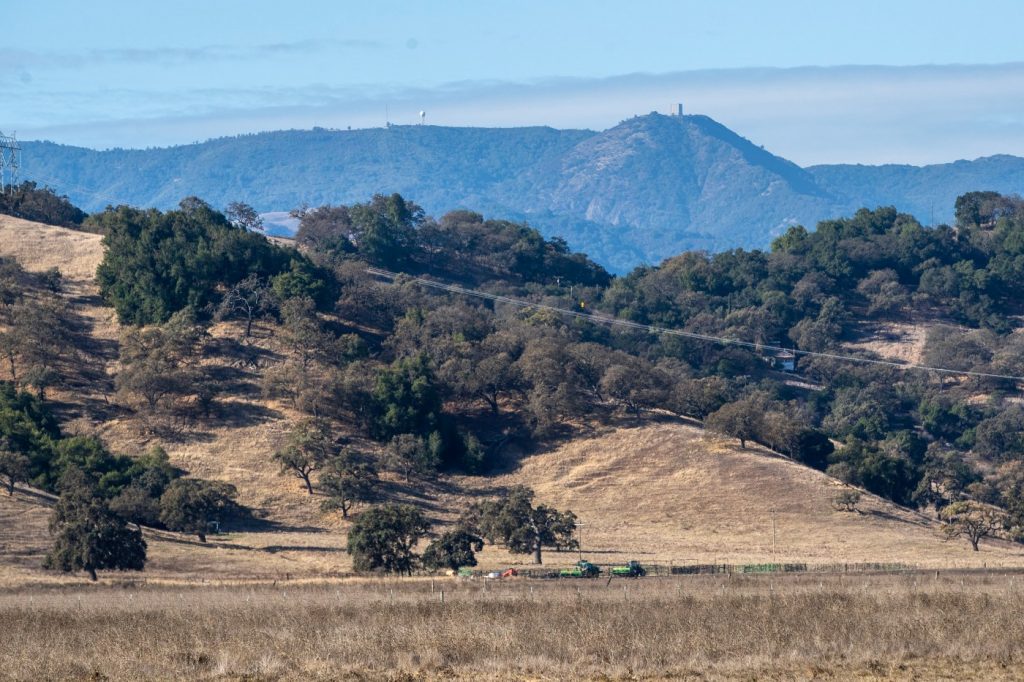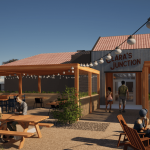Once again, the environmental battle is on to stop what would be San Jose’s first cemetery in 140 years from being built on a vast swath of land in Coyote Valley.
Ten years after San Jose city leaders agreed to allow cemeteries on more than 100 acres of open space, environmentalists and nature lovers are renewing their fight against the Heritage Oaks Memorial Park project with their decade-old concerns about water usage, fire risks, wildlife impacts and material changes to the landscape.
The battle comes as San Jose is quickly running out of space for cemetery or crematory use between the three sites in the city at Los Gatos Memorial Park, Calvary and Oak Hill.
“Currently, existing cemetery space in the greater San Jose area is approaching 96% of capacity, “landscape architect Michael Green said. “For many of us, this may not be of a great deal of importance, but for a significant portion of our community, there are deeply held religious beliefs, cultural traditions and family heritage that they feel very strongly about and need to have a local cemetery to memorialize, mourn and to celebrate the passing of their loved ones.”
While it reviews the permits for the first two phases of development, which span about 40 acres, the city has agreed to require a supplemental environmental impact report for the project next to Calero County Park and Cinnabar Hills Golf Course., allowing these groups to revive their long-held concerns.
“It’s ridiculous and frankly a little bit offensive that anyone will propose a project on open space in our precious little site that requires remaking the entire landscape into something else,” said Alice Kaufman, policy and advocacy director of Green Foothills. “If you want a site that’s not hilly, don’t put it in the hills. If you want a green lawn, don’t put your project in the middle of a landscape that is naturally brown for most of the year.”
Despite hearing some of the same objections a decade ago, including from the Audubon Society and the Sierra Club, the San Jose City Council approved a planned development zoning district in 2014 that would allow cemetery uses on 102 acres and private open space on approximately 173 acres of the property owned by the Brandenburg family.
However, since then, developers have faced pushback for projects in Coyote Valley, including last year when the county Board of Supervisors allowed the Santa Clara Valley Open Space Authority to acquire a 4.6-acre parcel through eminent domain, stopping the then-owner from building a new home on the land. Voters also approved Measure T in 2018, which allocated up to $50 million for land acquisitions in Coyote Valley by the city.
The larger plans for the cemetery include the construction of a two-story, 26,000-square-foot funeral home, parking lots and up to eight community mausoleums totaling 23,750 square feet, though project planners said they would build no more than three over the next 25 years.
In the 10 years since the city approved cemetery uses, planners have made several changes to the project to address concerns that they conceded were valid — including reducing the amount of earthwork moved by 60% after activists took issue with excavating the hillsides to make the property flat.
“One of the things that the applicant team has been very committed to is environmental sustainability and sensitivity,” Green said. “It’s not just because it’s the right thing to do, but it’s also good for business. The less dirt we move, the less money we spend on that and the lower the temporary impact from construction going on.”
Green also said cemeteries could be part of the solution to wildfire risk as the project would provide a safe area for fire crews and residents. He also noted that all of the structures would use fire-resistant materials.
Conservational and environmental groups, however, are not buying into the project just yet and have asked the city to address several outstanding questions about its impact, including the project’s plans to remove and replace native grasses.
“Given that San Jose residents have been asked for years to remove their own non-native lawns due to the water usage involved in maintaining grass lawns, it’s pretty outrageous that this project includes 75 acres of grass lawns that will require irrigation,” Kaufman said. “The fact that the project will use recycled water doesn’t make it better. Our local water providers have been exploring potable reuse of purified water for years and when there are proposals for desalination that are being seriously considered in order to supplement our local water supply, we should not be treating recycled water as though it isn’t important.”
The groups have also asked the city to address the impacts on wildlife, including deer, bobcats and mountain lions, that travel through the area, asserting that the developers’ plans to not have barriers or fencing were inadequate.
“Wildlife movement isn’t about whether animals can physically walk between buildings,” Kaufman said. “It’s about whether there is habitat on the landscape scale that supports that wildlife movement.”
Related Articles
Veteran real estate firm grabs big office and tech campus in Sunnyvale
New hope for Walnut Creek’s dream to revamp business park into ‘live, work, play’ destination
Lender seizes East Bay apartment complex as real estate market falters
Cisco will shift units from north San Jose and San Francisco to Santana Row
Livermore land sold for $40 million-plus, tech project eyed
If the environmental report concludes there is a significant impact, the project would require approval from the planning commission. Otherwise, the developers only need the city’s planning director to sign off on the project.
Either way, conservationists are not willing to give up without a fight.
“The biggest thing we can do against the biodiversity and climate crisis isn’t just restoration,” said ecologist Serena Myjer. “It’s preserving and protecting the nature we still have from development. It starts here in Coyote Valley.”


